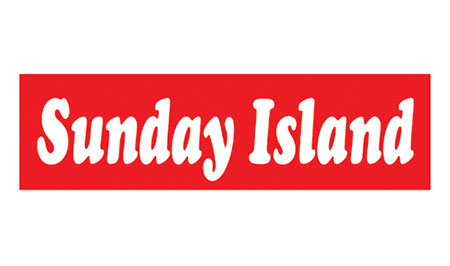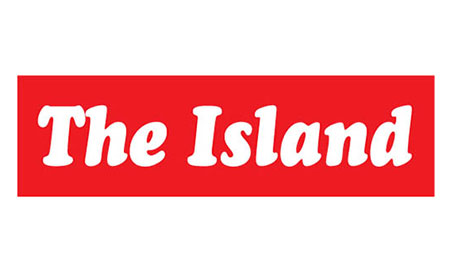Business
The Darker Side and the Light at the end of the Energy Tunnel

Eng Parakrama Jayasinghe
Those of us who were hoping for some sanity to emerge in the energy sector were given a severe jolt on Dec. 15 on reading the press release from the Presidential Secretariat, presumably after the Presidents meeting with the Ministers and senior officials of the energy sector. This stated that His Excellency had given instructions to develop action plans to achieve the target of 70% contribution to the electricity sector by 2030 using Hydro, Solar Wind and LNG resources.
This was indeed a shock, as this portends an attempt to constrain the space available for the future development of true renewable energy, thus scuttling the President’s declared target.
Fortunately, good sense has prevailed and an amended press release appeared next day without the reference to LNG as part of the 70% R E Target by 2030. It is also a matter of comfort to listen to the recordings of the above meeting, where the president was very clear in his instructions citing only Hydro, Wind and Solar as the renewable energy sources. But it is a matter of concern to us why Bio Energy which has none of the impediments of Solar and Wind, but has multiple spin off benefits, and has all the attributes of a source of firm power available 24/7 throughout the year, continues to be ignored. Fortunately there is an interest to accelerate the implementation of the many stalled renewable energy projects, thus setting the country on the correct path.
Role and Acceptability of LNG
Natural Gas is certainly not a renewable energy resource. But is it a “Clean” source of energy? Certainly it is a lot “Cleaner” than both coal and oil and is free from some most toxic components such as sulfur, lead, mercury and a plethora of heavy metals and radioactive nucleoids present in coal. But it will certainly emit
* 50% of carbon emissions compared to Coal not zero carbon as in case of Solar and Wind
* Significant amounts of Oxides of Nitrogen
* Potential fugitive emissions of Methane prior to combustion which is 23 time more potent than Carbon Dioxide.
In Sri Lanka’s context, what is even more important is the fact it is an imported resource subject to the vagaries of price fluctuations and the parity rate of exchange, continuing to compromise our energy security. LNG is the lesser evil, and in the light of the CEBs reluctance accept the vast strides in technology which has made it possible for both wind and solar to be upgraded to firm sources of electricity generation, and due to the lack of any significant additions to the generation capacity for over five years, limited use of Natural Gas may have to be viewed as an interim option.
Questions Needing Urgent Answers
However, a very severe uncertainty of the source and the means of supplying the LNG necessary to operate the 300 MW LNG plant remains unresolved, and appears to be ignored, according to the information available to the general public. Sri Lanka escaped a potential disaster by not proceeding with an unsolicited proposal to set up a Floating Storage and Re-gasification Unit (FSRU) and a contract to supply LNG for 20 years on terms totally disadvantageous to us. But the million dollar questions remains unanswered:
1. What is the means of supplying LNG to the proposed 300 MW power plant at Kerawalapitiya?
2. Under whose control will such supplies, presumably from an FSRU operate, and which is the location chosen?
3. If the gas supplies are not available by the time the power plant is commissioned, will the plant be operated with diesel or some other oil and for how long?
4. What will be the extra cost of using such alternate fuels and who will bear the extra cost above the tendered price of Rs 14.85 per unit?
5. In the absence of any plans of resolving such issues, is the government still pursuing options for more LNG plants with India and Japan and now with the USA?
With such a plethora of unanswered questions, even assuming that Sri Lanka will be obliged to proceed with the first 300 MW LNG plant, at least as a means of avoiding any more ruinous emergency power options, isn’t it time to take a very close look at the need or the justification for any further use of LNG ?
As usual Sri Lanka has missed the bus in this instance too. If the first LNG plant was initiated and a viable means of supplying the LNG was initiated in 2016, we could have avoided depending on emergency power for at least two years up to now, and it would have improved the space for greater level of integration of Solar and Wind to the national grid and the consequent reduction of the huge losses incurred by the CEB annually.
Hope for the Future
But on a happier note, the world did not stand still, and technologies are now available to iron out variability and seasonal and diurnal nature of wind and solar energy . For example the State Minister is keen to launch the 100 MW Solar park at Siyambalanduwa and a further 100 MW of solar and 150 MW of wind power in Pooneryn very early. It is very likely that all these projects will generate electricity at costs less than Rs 10.00 per unit. Therefore the addition of adequate battery storage is feasible to at least serve the peak loads as well as to make them sources of firm power. The resultant cost may not surpass the Rs 14.85 per unit expected from the LNG plant.
A place for Prosumers and Electricity as a National Industry
In addition the innovative program of State Minister Duminda Dissanayake to provide 5 kW rooftop solar systems to 100,000 Samurdhi recipients without burdening the treasury is a major paradigm shift in the electricity sector whereby the smallest level of consumer becomes a generator of electricity for his own consumption with a significant surplus and thus becomes a PROSUMER whereby the Electricity Industry becomes a contributor to the GDP instead of being a mere facility for other sectors to grow. With a total of 1.6 Million Samurdhi recipients, the future potential for growth of this program is immense
As a further step in this direction the program to install micro Solar Parks of 100 kW linked to 10,000 distribution transformers will make the Electricity generation a national industry adding further to the GDP. These two programs would add 1,500 MW of Solar PV and create vast employment opportunities.
We earnestly request Minster Dulles Alahapperuma and State Minister Duminda Dissanayake to very seriously evaluate this possibility. This will enable the president to plan for the next goal of 100 % RE
E Mail parajayasingle@gmail.com
- News Advertiesment
See Kapruka’s top selling online shopping categories such as Toys, Grocery, Flowers, Birthday Cakes, Fruits, Chocolates, Clothing and Electronics. Also see Kapruka’s unique online services such as Money Remittence,News, Courier/Delivery, Food Delivery and over 700 top brands. Also get products from Amazon & Ebay via Kapruka Gloabal Shop into Sri Lanka.
Business
Unlimited music streaming platform in Sri Lanka

SLT-Mobitel, the nation’s ICT and Telecommunications Service Provider recently partnered with Spotify, to mark their launch in Sri Lanka. Spotify is a paid premium music streaming app which allows subscribers to listen to music to their hearts content. Both, SLT-Mobitel Post-Paid and Pre-Paid customers will now be able to enjoy Spotify by activating a monthly recurring subscription or one-time subscription plan and access unlimited music streaming and downloading facilities.
The subscription charges will get added to the user’s customary billing, where payment will be deducted in real time. Starting from the payment date, the user will be able to access Spotify and download their favourite songs, for the next 30 days. Users who sign up for their first monthly subscription will receive an additional one month, courtesy of Spotify. The one-month subscription plan is not applicable with one-time subscription plans. SLT-Mobitel data rates, depending on the user’s respective broadband charges, will apply.
Spotify also has some exciting features that will provide SLT-Mobitel customers with the opportunity to listen to ad-free music, access millions of uninterrupted music under one platform, play any song they like, anywhere they go, and also be able to enjoy their music offline.
SLT-Mobitel customers can select their preferred premium package under four categories; Individual, Duo, Family, Student. Each category has recurring and non-recurring plans. After one month of free streaming, the package will activate once the offer period terminates. While both, the Individual and Student premiums are limited to one account user, the Duo package offers two accounts and the Family premium is accessible through six accounts. To view Spotify plans, users can log on to https://spoti.fi/3aLWvce
Business
Sri Lanka using ‘sovereign power’ over economy: CB Governor

by Sanath Nanayakkare
Anyone conversant with the elements of a political economy would know that Sri Lanka is using its ‘sovereign power’ to manage the different dynamics of the economy in a sustainable manner, Professor W. D Lakshman Governor of the Central Bank said on Wednesday.
“Some critics are saying that we adopt a so-called modern monetary theory. That’s not the case. In fact, Sri Lanka is using its sovereign power in a number of economic aspects to honour its external debt repayment commitments as well as to reduce its debt burden in the medium term as well as achieve resilient growth in the medium to long term, he said.
“We make policy decisions to boost our gross foreign reserves, meet our external debt servicing, to facilitate monetary expansion, to boost our GDP growth, to strengthen our current account balance and manage our domestic and external economic variables in a sustainable manner. This is not a modern monetary theory. This is an age-old tool used by central banks around the world when the circumstances demand it, he said.
“Certain trade-offs will be necessary when dealing with an economy which has a big fiscal gap to bridge. There are efforts to push Sri Lanka towards the IMF again which would in turn have influence on our policymaking. We have taken policy measures to stabilize the economy and we have adequate reserve levels to meet our debt repayments. Meanwhile, we are in negotiations with overseas central banks and multilateral agencies to further boost our reserve level and it would materialise within a matter of weeks,” he noted.
“One of the tools the Central Bank has introduced is in respect of repatriation of export proceeds into Sri Lanka and conversion of such proceeds into Sri Lankan rupees in order to strengthen the foreign exchange situation of the country,” he said.
The Governor made these remarks while delivering the keynote speech at a webinar organised by the Veemansa Initiative led by its Managing Director Luxman Siriwardene – the former Executive Director of Pathfinder Foundation.
The webinar revolved round the topic ‘External debt situation in Sri Lanka: Are we heading for a resolution or crisis?’
Professor Sirimal Abeyratne, Prof. Sumanasiri Liyanage, Dr. Nishan de Mel and Dr. Ravi Liyanage were the other speakers on the panel.
Business
CSE on the rebound; indices close positive

By Hiran H.Senewiratne
CSE produced signs of a rebound yesterday with both indices closing positive, though turnover remained low. Central Bank Governor W.D Lakshman’s recent statement on managing foreign reserves gave some boost to the market yesterday, stock market analysts said.
The index experienced a zigzag movement within the early hours of trading; thereafter, it recorded a slight up-trend as it reached its intraday high of 7,439. Later, the market witnessed a down-trend at mid-day, followed by a sideways movement and closed at 7,372, gaining 43 points during the month of February, market sources said.
It is said the banking sector dominated turnover with a contribution of considerable parcel trades in Sampath Bank, Commercial Bank and HNB.
Further, the Commercial Bank’s impressive quarterly results during the recent turbulent period also built investor confidence. Commercial Bank was able to register a18 percent net interest income when other banks were reporting a decline. Its share price increased by Rs. 3 or 3.5 percent. On the previous day, its shares started trading at Rs. 85 and at the end of the day they moved up to Rs. 88. Due to the positive growth results, the bank announced a Rs. 4.40 dividend per share, plus a Rs. 2 script divergent for every share.
Further, Sampath Bank shares also appreciated in both crossing and retail. In crossings its shares appreciated by Rs. 1.At the end of the day they moved up to Rs. 154.50. In the retail market, its shares moved up by Rs. 2 or 1.3 percent. Previously, its shares fetched Rs. 154 and at the end of yesterday they moved up to Rs. 156.
Amid those developments, both indices moved upwards. The All Share Price Index went up by 104.48 points and S and P SL20 rose by 67.78 points. Turnover stood at Rs. 3 billion with four crossings. Those crossings were reported in Sampath Bank, where 3.9 million shares crossed for Rs. 602.2 million, its share price being Rs. 154.50, HNB 375,000 shares crossed for Rs. 39.4 million, its shares traded at Rs. 105, Pan Asia Power 9.5 million shares crossed for Rs. 33.2 million, its shares traded at Rs. 3.50 and Access Engineering 1.2 million shares crossed for Rs. 28.2 million; its shares traded at Rs. 24.
In the retail market top five companies that mainly contributed to the turnover were, Expolanka Rs. 450 million (10 million shares traded), JKH Rs. 205 million (1.3 million shares traded), Browns Investments Rs. 199 million (34.9 million shares traded), Sampath Bank Rs. 191 million (1.2 million shares traded) and Dipped Products Rs. 137.7 million (2.8 million shares traded). During the day 101 million share volumes changed hands in 18046 transactions.
During the day, Expolanka, the biggest contributor to the turnover, saw its share price appreciating by Rs. 6.20 or 15 percent. Its share price quoted on the previous day was Rs. 41 and at the end of trading yesterday it moved up to Rs. 47.
Sri Lanka’s rupee quoted wider at 193.50/195.50 levels to the US dollar in the spot next market on Thursday while bond yields remained unchanged, dealers said. The rupee last closed in the spot market at 194.50/195.00 to the dollar on Wednesday.









